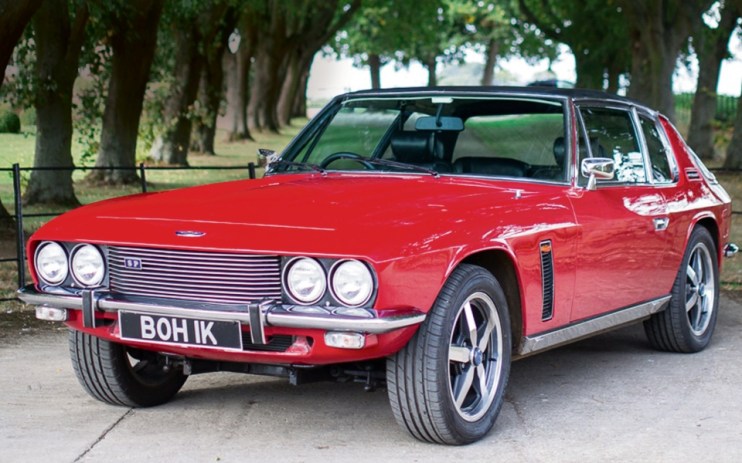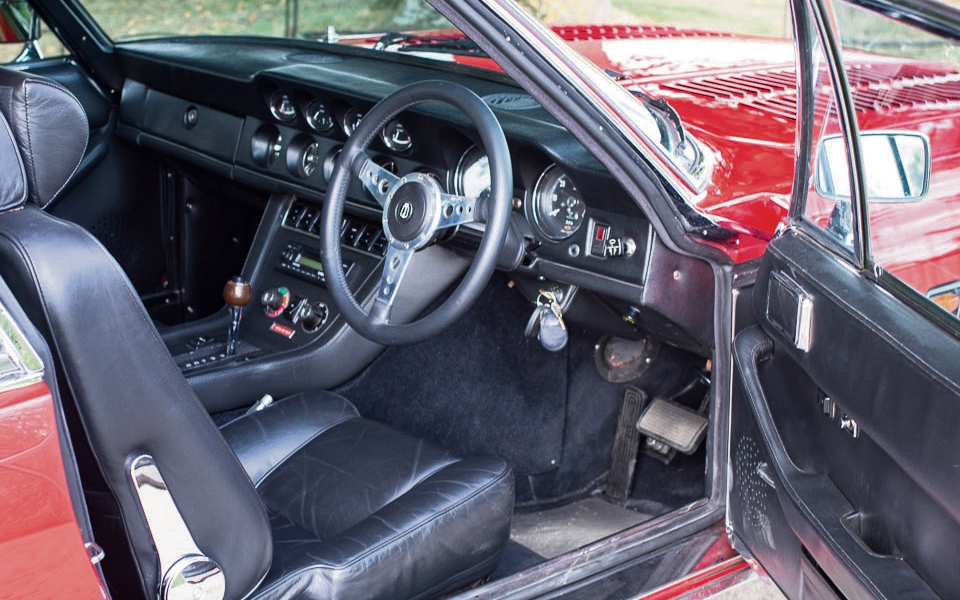Jensen Interceptor review: A real brawn star motor that drives like nothing else

Sharp-suited Italian styling. A brawny all-American V8. A sumptuous wood-and-leather British interior. Oh, and probably the coolest car name ever conceived. The Jensen Interceptor had it all. Sadly, this glamorous GT was also burdened with ‘traditional’ British build quality, but that’s nothing Cropredy Bridge can’t fix. Based in a quaint village near Banbury, the company is the world authority on Jensens, and is busy reinventing the marque for the modern era. I’m here to drive an Interceptor Mk3, followed by a modified version of the flagship SP. First, though, a quick history lesson.
Launched in 1966, the Interceptor was designed by Touring of Milan. Early cars were assembled by Vignale before production moved to West Bromwich, where it remained until 1976. Chrysler supplied the V8 engines, the vast majority with a three-speed automatic gearbox.
A convertible was sold in limited numbers, but the jackpot for collectors is the pioneering FF: the first road car with four-wheel drive and anti-lock brakes. Just 320 were made, out of around 6,000 Interceptor variants in total. Cropredy Bridge has around 15 cars in the showroom, plus several more in its workshop – including a ‘barn-find’ FF originally bought by Porsche to develop its 4WD system. “Each car is different as they were hand-made,” explains technical manager Mark Walbyoff. “We take on anything from an oil-change to a full 3,000-hour restoration. If parts aren’t available, we make them.”
CEO Matthew Guillard-Watts then pulls the wraps off a work-in-progress project. His demo Interceptor ‘CB’ will boast 500hp, a six-speed gearbox, independent rear suspension, leather and Alcantara upholstery, and a high-end audio system. However, each car will be entirely built-to-order and bespoke. “A CB customer can have anything up to the 852hp Dodge Demon engine,” says Walbyoff. Gulp.
On capillary lanes that border the Cotswolds, I’m quietly thankful for ‘just’ the 335hp of the Mk3. This 1974 car has been restored to original spec, giving me a taste of the authentic Interceptor experience. Cocooned by a high transmission tunnel, its soft seats feel like lazyboy recliners, while tiny dials and unlabelled switches are blunderbussed across the dashboard. The headlamp switch is on the floor, where the clutch pedal would normally be, and there are two horn buttons: one for a cheery toot, the other an angry parp.

The 7.2-litre V8 coughs lazily into life. Prod the throttle and the whole car rocks with big-block torque, then clunk the shifter into Drive and the Interceptor slurs away. Its power steering is light and aloof, its suspension floaty and unflustered. That engine is the main event, though. It rumbles like rolling thunder as two twin-barrel Webers gargle unleaded at a rate of 12.5mpg (yes, really). And it pulls like an Amtrak train: effortless and knife-through-butter smooth.
I pull over and swap into the SP. Those initials stand for ‘Six-Pack’ (another oh-so-cool Jensen name) and its additional carburettor means a heady 385hp. This car is half-way to a CB, with some carefully chosen upgrades – notably 17-inch alloys, adjustable dampers and beefed-up Fosseway brakes – to modernise its manners. The result is keener turn-in and a more planted, confidence-inspiring feel, plus explosive kickdown response. The only downside, says Guillard-Watts, is “about 9mpg if you press on”.
Cropredy Bridge has helped Jensen reclaim its reputation, and prices are rising. You’ll pay well into six figures for a tidy Vignale or FF, although project cars are still out there for hatchback money. If a Bentley is too brash and an E-Type too obvious, the Interceptor is a captivating alternative.
• Tim Pitt works for motoringresearch.com